Sonos Roam vs Sonos Move: how the Sonos Bluetooth speakers compare
Do all roads lead to Roam? Or is, in this case, bigger better?
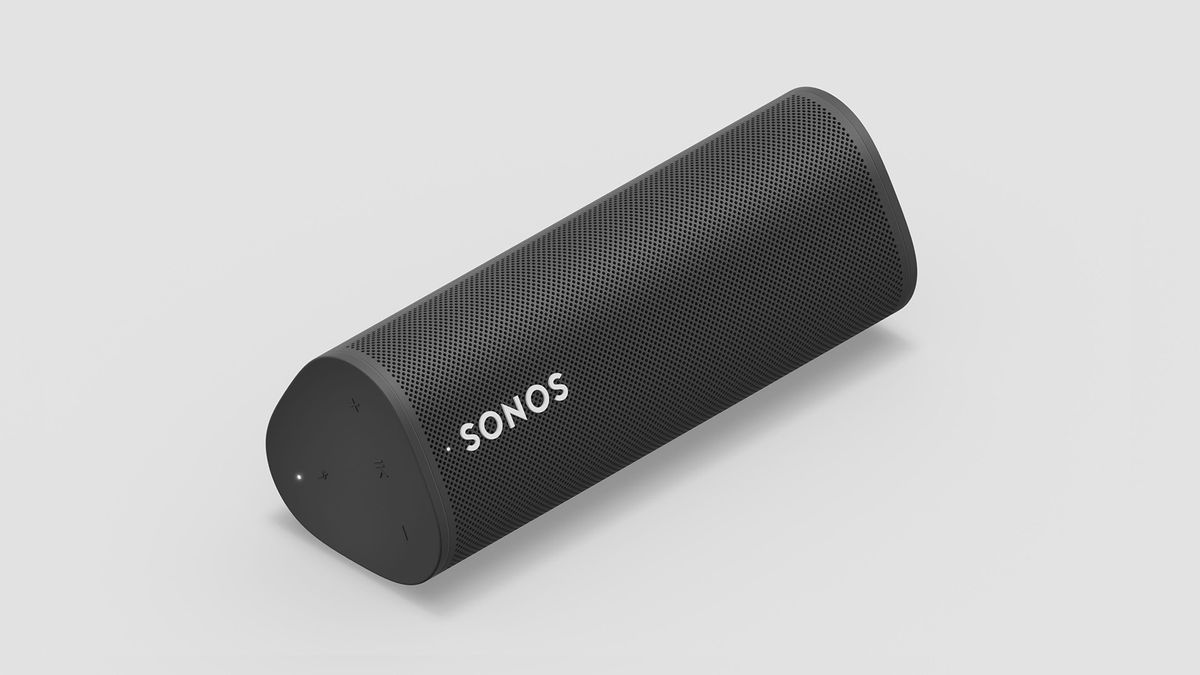
The Sonos Roam is only the firm's second-ever portable Bluetooth speaker, following the 2019-launched Sonos Move and marking another break away from its traditional at-home Sonos system.
The Roam is smaller and consequently more portable than the Sonos Move – cheaper, too. And it's shaping up to be a real challenger to the best Bluetooth speakers around.
But what does it bring to the already crowded Bluetooth speaker market? And how does it compare to its larger, pricier sibling?
Note that both the Move and Roam compared here now have sequels – the suitably named Move 2 and Roam 2. You can see how they compare to their respective predecessors in our Sonos Move 2 vs Move and Roam 2 vs Roam in-depth comparisons.
Sonos Roam vs Sonos Move: price
The Sonos Roam is essentially a much smaller, much more portable Move and so it shouldn't come as a surprise that it's more affordable. The Roam costs £179 ($179, AU$299, €179), making it the cheapest Sonos speaker ever (apart from those made in collaboration with IKEA), sitting below the slightly pricier Sonos One SL. That's also in the ballpark of many of the best Bluetooth speakers around, although for its size (albeit not feature set) there are plenty around asking half that price.
The six-times-the-size Move costs more than twice that at £399 ($399, AU$649), so yes, there's quite a difference in cost. This might rule the Move out for people, but it's still worth knowing what you're getting (or not getting) if you choose either one.
** WINNER ** Sonos Roam
Sonos Roam vs Sonos Move: design
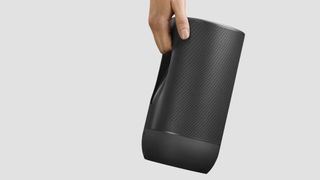
As soon as you clap eyes on it, you'll see the Roam is a very different beast to the Move. It's triangular, for a start, like a Toblerone. And it's a lot smaller – six times smaller in fact, measuring just 17 x 6 x 6cm. That's smaller than a standard water bottle. Naturally, it's lighter, too, tipping the scales at 430g.
The comparative specs for the Move are dimensions of 24 x 16 x 13cm and a weight of 3kg.
One of the biggest criticisms of the Move is that its bulk and heft pushes the definitions of portability. Whereas the majority of Bluetooth speakers are designed to be tossed in a bag and taken to the park, picnic, pool or beach (just as the Roam is), the Move is more of a home speaker that can be moved from room to room or into the garden.
In light of its more rugged leanings, the Roam is also more resistant to the elements than the Move. It's IP67-rated, meaning it can be completely submerged in three feet of water for up to 30 minutes. It's completely impervious to dust, too. The Move is only IP56-rated, which means it's only protected from ‘harmful dust’ and ‘strong water jets from all directions’.
The names of both devices are quite apt, then: the Move is intended to be moved from room to room, and the Roam to be taken with you on your wider travels.
** WINNER ** Sonos Roam
Sonos Roam vs Sonos Move: features
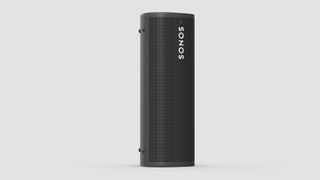
While the Roam is a very different proposition to the Move, it does share some of the same traits. For example, it also has both Bluetooth and wi-fi connectivity, so you can stream tunes to it offline from a phone or tablet, or over the internet using a service such as Spotify or Tidal, like the rest of the Sonos speaker range. Wi-fi also means it can work as part of a Sonos multi-room system (as the Move can too); it's as much a member of the family as every other speaker, also controlled by the Sonos S2 app.
Like the Move, the Roam has a rechargeable battery, and despite its much smaller size, it manages to match the Move's 10-hour run time. In that context it's impressive, although note that (not-so-fruitfully-featured) Bluetooth speakers do often offer longer battery lives.
To juice it up, the Roam comes with a USB-C cable (but not a power adaptor). Sonos has also launched a $49 dedicated wireless charging base that the Roam clips onto using magnets, although Roam is also compatible with third-party Qi wireless chargers.
The Move also has a USB-C cable, with a charging base that comes in the box. Its battery is also swappable, should you need to replace it (it will be a lot cheaper than buying a whole new speaker). Sonos hasn't yet mentioned such functionality with the Roam, but as the consumer tech world is moving towards more sustainability, we wouldn't be surprised if becomes an option for Roam – if its design even allows for it.
Also like the Move, the Roam has voice control via Amazon Alexa or Google Assistant, as well as Apple's AirPlay 2. Neither the Move nor Roam can work as a home cinema surround speaker with the Sonos Arc, Playbar, Playbase, Beam or Sub – that remains the job of the One, One SL and IKEA speakers.
Right, so that's enough similarities; let us tell you how the two devices differ.
The first new feature the Roam offers is the automatic switching between wi-fi and Bluetooth connectivity and connected devices. That means when you leave the house it can connect to a Bluetooth device without you having to initiate pairing. You don't have to do anything, in fact. Just grab it and go.
'Sonos Swap' is also new and exclusive to the Roam. This lets you 'hand off' whatever music the Roam is playing to another Sonos speaker (the nearest to it) by long-pressing its play/pause button. So if you come home from a long afternoon's picnicking you can seamlessly swap what's playing to your home system. Neat. (It's also a feature we're expecting to work with the highly anticipated Sonos wireless headphones, due later this year.)
Auto TruePlay is on board, too – and introduces improvements over the version that launched with the Move. For the uninitiated, this is automatic calibration technology that uses the speaker's microphones to measure the frequency response of its surroundings and adjust sound accordingly, whenever it detects being placed in a new location. Move the speaker from a bookshelf to a coffee table, say, and it'll recalibrate its sound to its new surroundings to give you the best audio possible. This tech was first seen in the Move, but the Roam moves it along by letting it work in a Bluetooth domain as well as a network one. This enhancement has now also been added to the Move via a firmware update.
Ultimately, while there's plenty familiar about the Roam, there's plenty new too. And it could be the smartest Bluetooth speaker of its size ever made.
** WINNER ** Sonos Roam
Sonos Roam vs Sonos Move: sound
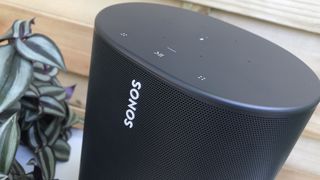
Of course, for all the bells and whistles, a speaker sinks or swims by its sound quality. The Sonos Move managed to impress us in this area, with a sonic profile similar to the excellent Sonos One: think weighty, full-bodied audio, with a tonality that’s nicely even-handed and not bereft of solid, deep bass.
The Move's ample size gives it plenty of scale and space – put it at the centre of your garden party, and you won't be disappointed. But volume never comes at the expense of quality – the audio stays composed even when pushed to the limit of what's socially acceptable. You can expect similar sonic satisfaction from Bluetooth playback too.
While the Roam shares the same broad sonic character as its bigger brother (Sonos products are impressively consistent in this regard), it predictably sounds much smaller. There's a good amount of bass weight for a small speaker, but next to the Move it sounds understandably lightweight and goes far less loud.
In essence, the Move is designed to fill a large lounge or garden with solid, weighty sound, whereas the Roam is much smaller in scale and designed more for picnics at the beach or park, where the listener will be sitting quite close. It projects its sound a little less well, then, but it remains energetic, enthusiastic and clear. And, while it's not as powerful as the bigger Move, it goes plenty loud enough in its own right and remains composed at high volumes, resisting any treble harshness.
Ultimately, both the Roam and Move can be beaten for sound by the very best wireless speakers in their respective price categories, but they're not far off the best and boast significantly more substantial feature sets.
** WINNER ** Sonos Move
Sonos Roam vs Sonos Move: the verdict
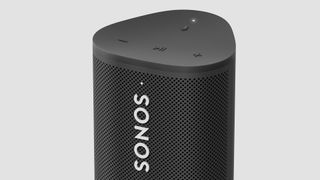
Despite the Roam taking substantially more category wins than the Move, it's actually very hard indeed to pick an overall winner because they're intended for very different scenarios.
The Move really stretches the definition of the word 'portable' and is really intended as a home speaker that can occasionally be moved into a different room or taken into the garden. Because it's so large, it's able to pack in significant sonic heft.
The Roam is obviously less sonically capable, but that's because it's vastly smaller and more portable. You can pop it in your bag or even, at a push, a pocket, and take it anywhere you might want to listen to music. It will go places that the Move can't and it costs significantly less, too.
Ultimately, which is 'best' depends on your budget and requirements. If you want a truly portable speaker that can also work with the rest of your Sonos system, get the Roam. If you want a big and brawny Sonos speaker that you can occasionally transport between rooms and take outside, the Move is for you.
Of course, you should also consider whether either Sonos speaker is truly right for you – our round-up of the best wireless speakers is here to help with that.
** OVERALL WINNER ** Draw
MORE:
Check out the best waterproof speakers for your pool party
Staying in? You want the best computer speakers money can buy
These are the best wireless speakers around
Get the What Hi-Fi? Newsletter
The latest hi-fi, home cinema and tech news, reviews, buying advice and deals, direct to your inbox.
What Hi-Fi?, founded in 1976, is the world's leading independent guide to buying and owning hi-fi and home entertainment products. Our comprehensive tests help you buy the very best for your money, with our advice sections giving you step-by-step information on how to get even more from your music and movies. Everything is tested by our dedicated team of in-house reviewers in our custom-built test rooms in London, Reading and Bath. Our coveted five-star rating and Awards are recognised all over the world as the ultimate seal of approval, so you can buy with absolute confidence.
